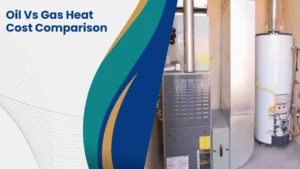A mini split, or ductless HVAC System, offers zoned temperature management in residences and commercial buildings while using minimal energy. It is a popular alternative to traditional central heating systems that require ductwork for distribution. One of the significant advantages of a Mini-Split System is its ability to provide heat without the need for ductwork. This article will explore how a mini-split work for heat and why it is an excellent choice for homeowners and businesses.
COMPONENTS OF A MINI-SPLIT SYSTEM
Two main parts make up a mini-split system: an outdoor unit and an inside unit. The outdoor unit houses the compressor, condenser, and expansion valve, while the indoor unit contains the evaporator and air handler. The two units are connected by a small conduit with a refrigerant line, a power cable, and a drainage pipe.
To understand how a mini-split work for heat, we must start with refrigeration basics. In any cooling or heating system, heat is moved from one place to another by circulating a refrigerant through a closed-loop system. When the refrigerant transports the heated indoor air outdoors, it releases the heat and causes a cooling. The cycle is then completed when the refrigerant returns to the interior unit, where it absorbs more heat.
Also cheeck: HVAC Terms You Should Know
The interior unit in a mini-split system carries out the heat transfer:
When you switch the system to heating mode, the indoor unit acts as an evaporator, absorbing heat from the outdoor air and carrying it inside. The refrigerant turns into a gas after absorbing heat from the ambient air. The gas is then compressed by the outside unit, increasing both its temperature and pressure.
The hot gas then flows back to the indoor unit, passing through a coil and transferring its heat to the indoor air. The room’s temperature is subsequently raised to the required level by the interior unit blowing warm air into the space. The refrigerant, now cooled and condensed back into a liquid, flows back to the outdoor unit through the refrigerant line, where the process repeats.
-
The beauty of a Mini-Split system is that it can provide Zoned Heating
You can set different temperatures in different areas of your home or business. You may manage the temperature in each indoor unit separately, allowing you to customise the settings for each room or zone. This feature can help you save energy and money by only heating the rooms you need rather than wasting energy on unused spaces.
-
The Energy Efficiency of a Mini-Split System is Another Benefit
Because it uses a more minor, ductless system, it doesn’t loss energy through leaks or poorly insulated ductwork. The mini-split system is also designed to be more efficient at transferring heat, so it requires less energy to maintain a comfortable temperature. This has the potential to save a lot of energy, particularly in bigger residences or commercial buildings.
Furthermore, mini-split systems are often equipped with advanced features that increase efficiency. For example, some models come with a Heat Pump that can reverse the refrigeration cycle and provide cooling in the summer. Other models are equipped with sensors that detect when a room is unoccupied and adjust the temperature accordingly, saving energy when no one is around.
Conclusion
A mini-split system is an excellent option for homeowners and businesses who want an efficient, zoned heating solution without requiring ductwork. Also, mini-split systems offer energy-efficient heating and cooling, advanced features, and zoned temperature control. All of these can help you save money and stay comfortable throughout the year. If you’re thinking about getting a new heating and cooling system, you should consider a mini-split system.






